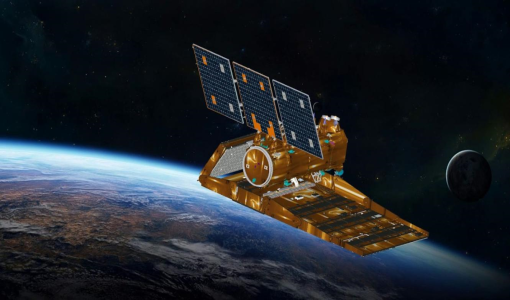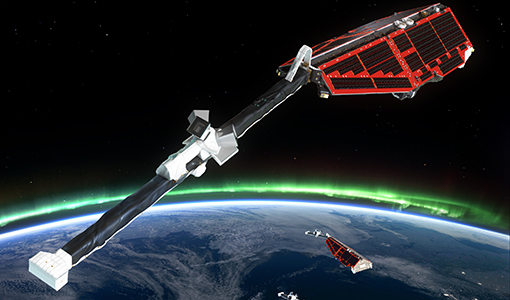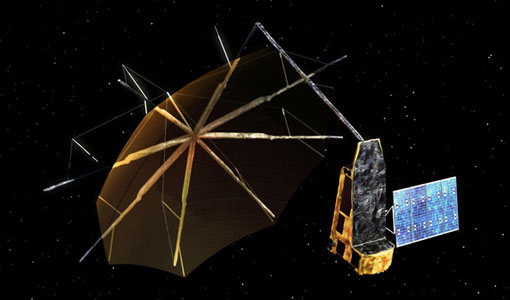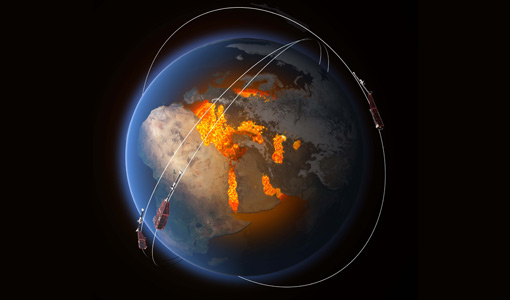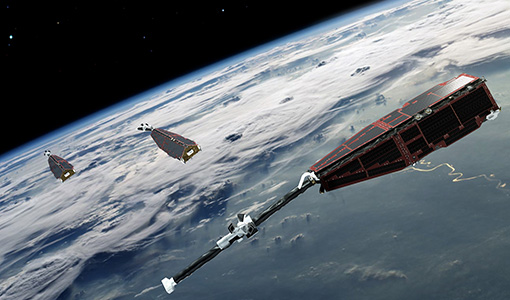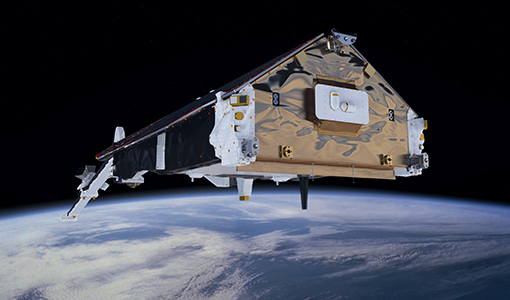- All Categories (61058)
- Data (150)
- News (290)
- Missions (39)
- Events (89)
- Tools (17)
- Activities (39)
- Campaigns (65)
- Documents (60369)
ACTIVITIES
Find the activities you need.
Activity - Projects
PUMAS Initiative
The Promotion of Utilisation and Mission Applications and Science (PUMAS) is a joint initiative between ESA and CONAE (the Argentinian Space Agency). Established in 2021, PUMAS organises collaborative activities between the two agencies in the field of Earth observation.
Activity - Projects
ESA's multi-level global thermosphere data products consistent with Swarm and GRACE (-FO)
In this project, the possibility of using the space-based along-track Thermospheric Neutral Density (TND) estimates for generating the European Space Agency (ESA)'s Level 3 (L3) global multi-level TND data products is assessed.
Activity - Projects
Swarm Ionospheric Polar Electrodynamics
The goal of the Swarm ionospheric polar electrodynamics (SWIPE) project is to create and disseminate the most advanced models of high-latitude Joule dissipation, ionospheric convection, and ionospheric conductances.
Activity - General activities
EO Summer Schools
ESA's series of summer schools, on Monitoring of the Earth System, aims to promote the exploitation of Earth observation (EO) data.
Activity - General activities
MUltisource data package tools and SErvices (MUSE)
The MUSE project aims to develop and integrate a tool to simultaneously manipulate geospatial data products, satellite, model and in-situ data.
Activity - Projects
Swarm Ion Temperature Estimation
The main objective of Swarm Ion Temperature Estimation (SITE) project is to estimate ion temperatures along the orbits of Swarm satellites using available LP electron density and temperature measurements, and numerical models.
Activity - Projects
Swarm LP Ion Drift and Effective Mass
The Swarm LP Ion Drift and Effective Mass (SLIDEM) project will augment Swarm's ability to measure the along-track component of ion drift, and assess the composition of ionospheric ions.
Activity - Projects
Swarm for earthquake study
Swarm for earthquake study (SAFE) will study the preparatory phase of large earthquakes through the analysis of electromagnetic data from sensors on board the Swarm constellation.
Activity - Projects
Plasmapause Related boundaries in the topside Ionosphere as derived from Swarm Measurements
In the project, Plasmapause Related boundaries in the topside Ionosphere as determined from Swarm Measurements (PRISM), the team develop products that characterise position of the plasmapause related phenomena in the topside ionosphere.
Activity - Projects
ESC Geomagnetic Conditions
The objective of the Expert Service Centre Geomagnetic Conditions - definition and development activities work is to ensure operational and development activities within the Geomagnetic Conditions Expert Service Centre of ESA's Space Situational Awareness Space Weather network.
Activity - Projects
Dipolar Spherical Elementary Current Systems (DSECS) toolbox
The purpose of this project is to create a user-friendly version of a previously developed analysis method for estimating ionospheric currents at low and middle latitudes.
Activity - Projects
Contribution of Swarm data to the prompt detection of Tsunamis and other natural hazards
The main objective of COSTO (Contribution of Swarm data to the prompt detection of Tsunamis and other natural hazards) project is to better characterise, understand and discover coupling processes and interactions.
Activity - Projects
Dragon Cooperation Programme
The Dragon Programme focussed on science and applications development in China using mainly data from the ERS and Envisat missions. The Prgramme was a cooperation between ESA and the National Remote Sensing Centre of China.
Activity - Projects
Dragon 2 Cooperation Programme
The Dragon 2 Programme focussed on the exploitation of ESA, ESA's Third Party Missions and Chinese Earth observation data for science and applications development in land, ocean and atmospheric applications.
Activity - General activities
EO Science for Society
ESA's Earth Observation Science for Society programme aims to promote scientific exploitation of satellite data, forges new scientific discoveries and pioneers new services, stimulating downstream industrial and economic growth.
Activity - Projects
TIRO
Topside Ionosphere Radio Observations from multiple LEO-missions (TIRO) project will provide two measurements from onboard instruments of LEO satellite missions: TEC (Total Electron Content) derived from GNSS signals, and electron density derived from KBR (K-Band Ranging) system observations.
Activity - Projects
Ionospheric signature of auroral and subauroral fast flows
The ionospheric signature of auroral and subauroral fast flows project aims to advance the understanding of narrow regions of fast flow in the auroral and subauroral regions.
Activity - Projects
SIEMIC
Swarm Investigation of the Energetics of Magnetosphere-Ionosphere Coupling (SIEMIC) project is a Living Planet Fellowship research project to discover how much energy flows from the magnetosphere to the ionosphere at which scales into each hemisphere.
Activity - Projects
VERA
VERtical coupling in Earth's Atmosphere at mid and high latitudes (VERA) is a project in response to the ESA ITT "Swarm+ Coupling: High-Low Atmosphere Interactions" with the duration of 16 months.
Activity - Projects
Swarm Outflow
The Swarm+ Coupling High-Low Atmosphere Interactions: Ion Outflow ("Swarm+ Outflow") project, which began in May 2019, centres on using Swarm spacecraft to tackle unanswered questions around non-thermal processes that lead to ion outflow.
